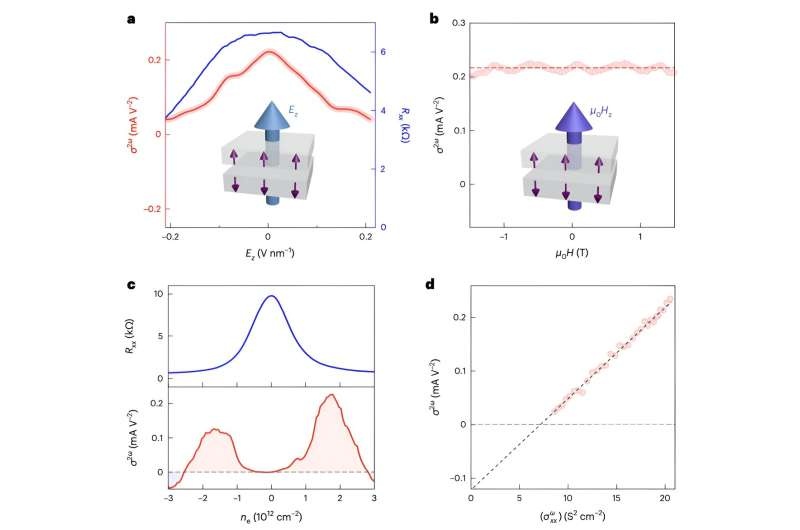Recently, researchers at Harvard University have made an unprecedented discovery- they observed a naturally occurring antiferromagnetic diode effect in the material MnBi2Te4. The discovery could help advance a variety of technologies, such as field-effect transistors and devices capable of harvesting microwave energy.

Discovering The Antiferromagnetic Diode Effect
Antiferromagnets are special insulators featuring a staggered (alternating) arrangement of the magnetic moments on neighboring atoms, such that there is no net macroscopic magnetization. Such materials display fascinating properties that might offer unique opportunities for the development of variousspintronic and electronics devices.
Researchers at Harvard University have observed a remarkable reaction between the material MnBi2Te4 – an antiferromagnetic diode effect. Discovered in different materials, this phenomenon allows electrical current to flow in a single direction through a device. Such materials have already been exploited in a broad range of devices, such as radio receivers and other electronic circuits, temperature sensors and microwave parts.
A special aspect of the discovery in MnBi2Te4 is that it is a centrosymmetric crystal with directional charge separation as a property. This result contrasts the traditional setting of diode effects ever known, as being attributed to non-centrosymmetric polar conductors.
More on Use Cases Now Enable →
From them, the Harvard University researchers show how the antiferromagnetic diode effect discovered in even-layered MnBi2Te4 opens doors to a swath of promising technologies.
An example of this is in -plane field-effect transistors. The technology may pave the way for antiferromagnetic logic circuits, which could be substantially faster and less power hungry than the established semiconductor-based electronics. Further, the team has demonstrated that antiferromagnetic diode functionality can be applied to a microwave energy harvester, which can convert ambient microwave radiation into dc electrical power.
Using state‐of‐the‐art methods such as spatially resolved optical (photoluminescence measurements), and electrical sum frequency generation, the scientists had generated some insights on how to understand antiferromagnets which can be turned on or off its diode effects at extremely low temperature in MnBi2Te4,and the mechanisms of this phenomenon. These studies unveiled uncommon features of this kind of material and led to unveil its application potential.
Conclusion
In a major breakthrough, researchers from Harvard University have detected the antiferromagnetic diode effect on odd-layered MnBi2Te4 []* even as they were studying layer-number effects in this quantum material. This surprising result defies our knowledge of diode phenomena, and could pave ways for the realization of next-generation technologies including antiferromagnetic logic circuits, and microwave energy-harvesting devices. With further research into the attributes and uses of this remarkable material, we may see additional progress that transform the future of electronics and energy generation.
